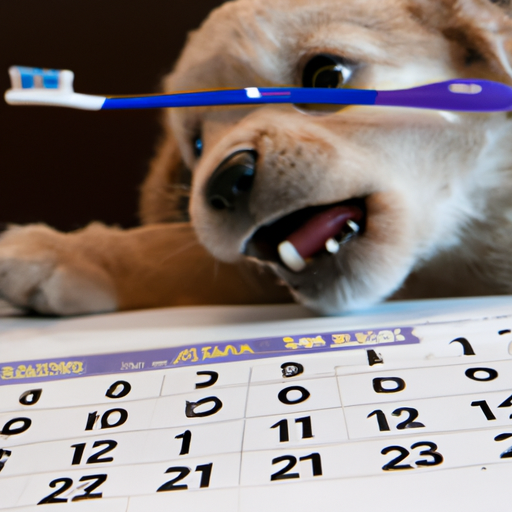Your furry friend’s dental health is of utmost importance. As a caregiver, it’s crucial for you to know when your dog’s baby teeth begin to fall out, and what to expect during this process. In this comprehensive guide, we’ll delve into the world of canine tooth development, and arm you with the knowledge you need to ensure your pup’s dental health is on point.
H2: Understanding Your Dog’s Dental Development
Just like human babies, puppies are born toothless. Their baby teeth, also known as deciduous teeth, start appearing when they’re about 3 to 4 weeks old.
A puppy will have 28 baby teeth in total. These include:
- 12 Incisors
- 4 Canines
- 12 Premolars
No molars develop during this stage.
These baby teeth are sharp and pointed, perfect for a diet of soft puppy food. But, as your pup grows and starts to transition to a diet of harder adult dog food, these baby teeth will gradually start to fall out.
H2: When Do Dogs Start Losing Their Baby Teeth
Dogs typically start losing their baby teeth when they’re around 3 to 4 months old. This is when their adult teeth start growing in and pushing out the baby teeth.
| Puppy Age | Teeth Development |
|---|---|
| 3-4 weeks old | Baby teeth start appearing |
| 3-4 months old | Start losing baby teeth |
| 7-8 months old | All adult teeth are in |
The process is generally painless for your pup, but you might notice some changes in their behavior.
H2: Signs Your Dog Is Losing Its Baby Teeth
You might not actually see your dog’s baby teeth falling out, as they often swallow them or lose them while playing. However, there are several signs you can look out for that indicate your dog is in the process of losing its baby teeth:
- Bleeding gums: This is normal and should not be a cause for concern unless it’s excessive or doesn’t stop.
- Chewing: Your pup might chew more than usual to relieve the discomfort of the new teeth coming in.
- Changes in appetite: They might eat less if their mouth is sore.
- Drooling: Excess saliva can be a sign of new teeth coming in.
H2: How to Care for Your Dog’s Teeth During This Stage
Proper dental care is essential during this stage. Here are some steps you can take to ensure your pup’s teeth and gums stay healthy:
- Provide appropriate chew toys: Chew toys can help soothe your pup’s sore gums and can help the new teeth come in properly.
- Feed them soft foods: If your pup’s mouth is sore, they might prefer softer foods.
- Start brushing their teeth: Use a toothbrush and toothpaste designed for dogs and start getting your pup used to having its teeth brushed.
H2: FAQ
Q: What should I do if my pup’s baby tooth doesn’t fall out?
A: Sometimes, a baby tooth doesn’t fall out when the adult tooth comes in, a condition known as retained deciduous teeth. If you notice this, bring your dog to the vet. The retained tooth may need to be extracted to prevent dental problems.
Q: Can a dog lose teeth due to bad dental health?
A: Yes. Dogs, like humans, can lose teeth due to poor dental health. Regular brushing and dental check-ups can help prevent this.
Q: Is it normal for my dog to have bad breath during the teething process?
A: Mildly bad breath can occur during the teething process. If it’s severe or lasts for more than a few days, it’s worth getting your pup checked by a vet.
Q: Is it necessary to brush my dog’s teeth?
A: Yes. Regular brushing is an essential part of maintaining your dog’s dental health.
Q: What should I do if my dog’s gums are excessively bleeding?
A: If you notice excessive bleeding, it’s best to consult with your vet immediately. While some bleeding is normal during the teething process, excessive bleeding could be a sign of other health issues.
Knowing what to expect as your furry friend grows and changes can help you provide the best care possible. Remember, when it comes to your dog’s health, never hesitate to reach out to a veterinary professional with your concerns or questions.



